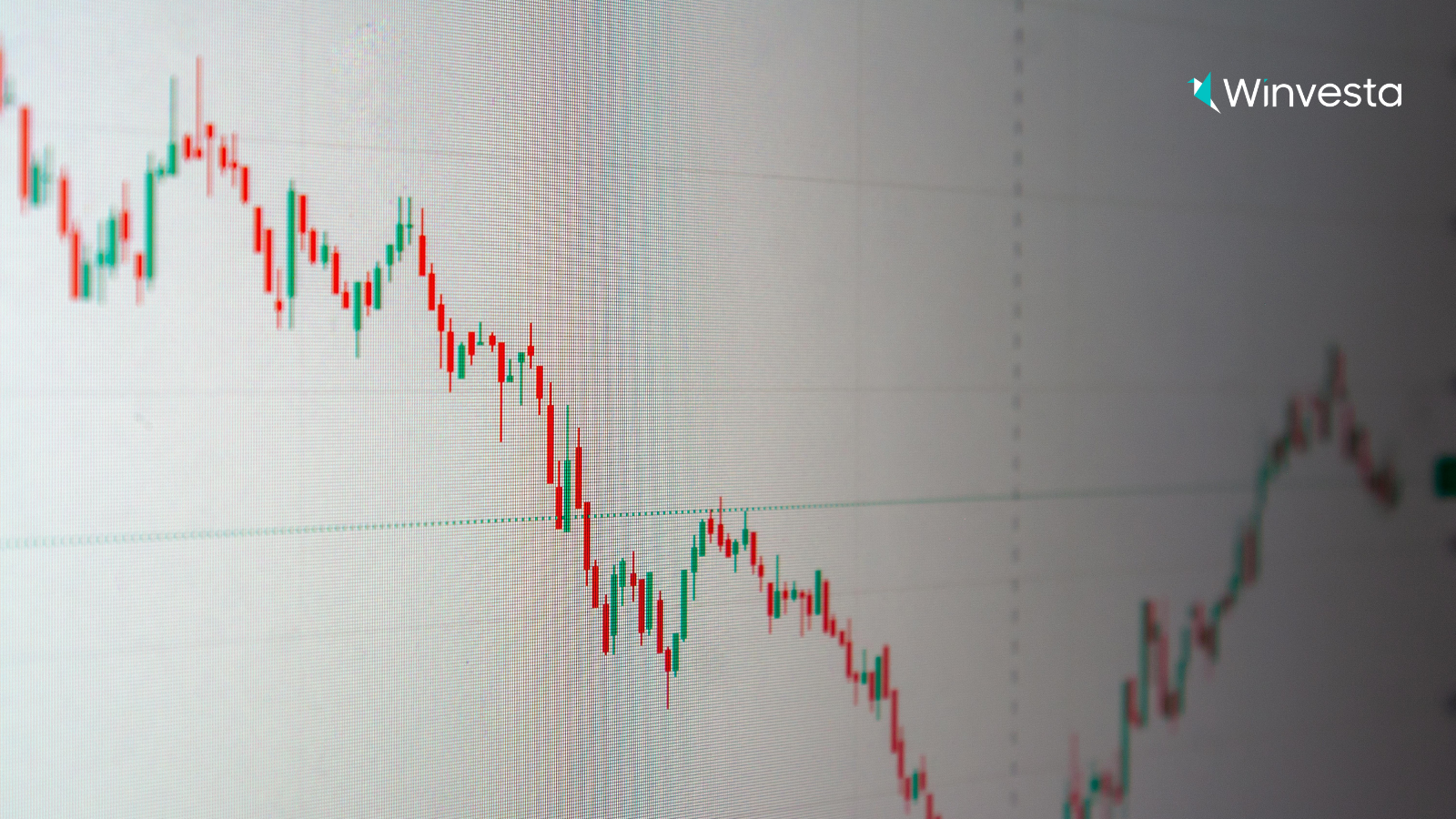Contents
Financial Ratio Analysis: A Guide for Every Investor
7 minutes read
02 June 2025

Financial ratio analysis is a powerful tool that helps you understand the secrets hidden in financial statements. You can use it to assess a company's financial health, performance, and potential for growth. This essential skill helps you make informed decisions about stock investments and understand market trends.
In this guide, you'll learn about different types of financial ratios and how to apply them. We'll cover liquidity, leverage, valuation, and performance ratios, showing you how to evaluate company valuations and activity levels. By the end, you'll have the knowledge to conduct your own financial analysis and invest with confidence in the stock market.
What are ratios in finance?
Financial ratio analysis is a powerful method to evaluate a company's financial health and performance. The meaning of ratio analysis encompasses the process of calculating specific ratios from essential financial data, providing key insights into a company's profitability, liquidity, solvency, and market valuation.
By comparing one number from a company's financial statements to another, you get a metric that helps you assess investment opportunities.
Key Financial Ratios Explained:
| Ratio Type | Purpose | Example Calculation | Insight Provided |
|---|---|---|---|
| Price-to-Earnings (P/E) | Valuation of stock relative to its earnings | INR 1675.31 / EPS of 4.44 = P/E of 4.5 | Compares stock price to earnings, indicating investment potential relative to earnings. |
| Current Ratio | Liquidity measurement | Current Assets / Current Liabilities | Assesses ability to cover short-term obligations with current assets. |
| Debt-to-Equity Ratio | Solvency and leverage analysis | Total Liabilities / Shareholders' Equity | Evaluates financial structure and debt burden compared to equity. |
Ratio analysis serves three main purposes: tracking company performance over time, comparing results between competitors, and striving for specific benchmarks. By using various ratios together and combining them with qualitative analysis, you can make informed decisions about investments, lending, and strategic planning.
In short, financial ratio analysis is a critical tool in finance, enabling investors to scrutinize balance sheets, income statements, and cash flow statements to gauge a company's financial health. Understanding what ratio analysis is and implementing ratio analysis formulas are crucial for forecasting the future financial state of a business. Additionally, working capital management and inventory turnover are essential accounting ratios, providing insights into resource management efficiency. Industry comparison through valuation ratios helps assess if a stock is valued properly in the market, while stock valuation techniques are refined using these financial assessments.
Financial ratio analysis and its types
%20(26).png?width=1600&height=900&name=Blog%20images%20(2)%20(26).png)
Financial ratios are essential tools for quantitative analysis, offering insights into a company's valuation, profitability, liquidity, and solvency. These types of ratios in accounting help you compare a company's performance over time and against its peers. By narrowing down the scales, financial ratios make it easier to evaluate companies and spot potential investment opportunities.
There are five broad categories of financial ratios:
- Liquidity ratios: These assess a company's ability to meet short-term obligations and handle unexpected financial challenges.
- Profitability ratios: They evaluate how efficiently a company generates profits relative to its expenses.
- Solvency ratios: These measure a company's long-term financial stability and debt management.
- Efficiency ratios: They provide insights into a company's operational effectiveness and cash flow performance.
- Valuation ratios: These help determine if a stock is overvalued, undervalued, or fairly priced in the market.
Each category offers unique perspectives on a company's financial health, helping you make informed investment decisions.
Liquidity ratios
Liquidity ratios help you assess a company's ability to meet short-term obligations without raising external capital. These metrics offer insights into a firm's financial health and its capacity to cover immediate debts. By comparing current assets to current liabilities, you can gage a company's short-term financial stability .
Three key liquidity ratios are:
- Current Ratio = Current Assets / Current Liabilities
- Quick Ratio = (Cash + Accounts Receivables + Marketable Securities) / Current Liabilities
- Cash Ratio = (Cash + Marketable Securities) / Current Liabilities
Generally, ratios above 1.0 indicate good financial health. However, extremely high ratios might suggest inefficient capital allocation. Investors and creditors use these ratios to evaluate investment potential and creditworthiness . Remember, while higher ratios often signal better liquidity, balance is key for optimal financial management.
Leverage ratios
Leverage ratios help you assess a company's debt levels and its ability to meet financial obligations. These ratios offer insights into how a business finances its operations using debt or equity . By analyzing leverage, you can evaluate a company's financial health and potential risks.
Importance of leverage ratios in understanding a company's debt management
Leverage ratios are crucial for investors and creditors. They show how much a company relies on borrowed funds and its capacity to handle debt. While debt can fuel growth if returns exceed interest rates, too much leverage can be risky. These ratios help you gage the balance between risk and potential rewards in a company's financial structure.
Breakdown of key leverage ratios
- Debt ratio: Measures total liabilities against total assets
- Interest coverage ratio: Shows ability to make interest payments (aim for 3.0 or higher)
- Debt to equity ratio: Compares debt to shareholder equity
Understanding these ratios helps you make informed investment decisions and assess a company's long-term financial stability.
Valuation ratios
Valuation ratios help you assess a company's market value in relation to its financial metrics. These ratios offer insights into whether a stock is overvalued, undervalued, or fairly priced. By comparing ratios to industry averages and historical data, you can make informed investment decisions.
Key valuation ratios include:
- Price-to-Earnings (P/E) Ratio: Compares share price to earnings per share. A higher P/E suggests investors expect higher growth .
- Price-to-Cash Flow (P/CF) Ratio: Evaluates stock price relative to cash flow generation . It's harder to manipulate than earnings .
- Price/Earnings-to-Growth (PEG) Ratio: Factors in expected earnings growth . A PEG below 1 may indicate undervaluation .
- Price-to-Sales (P/S) Ratio: Useful for startups without profits . Compare P/S with peers to gage attractiveness .
These ratios help you analyze stocks across different sectors and company stages .
Performance ratios
Performance ratios, also known as profitability ratios, help you assess a company's ability to generate earnings relative to its revenue, costs, assets, or equity. These ratios offer insights into a company's financial health and efficiency in creating value for shareholders.
Key performance ratios include:
- Return on equity (ROE): Measures net income relative to shareholders' equity . A high ROE can signal an attractive investment opportunity .
- Return on assets (ROA): Calculated as net income divided by total assets, it shows how effectively a company uses its assets to generate profit.
- Gross profit margin: Compares gross profit to sales revenue, indicating operational efficiency .
- Operating profit margin: Looks at earnings as a percentage of sales before interest and taxes .
- Net profit margin: The "bottom line" ratio, showing the final picture of profitability after all expenses .
These ratios help you compare a company's performance over time and against industry benchmarks.
Assessing company valuation
To assess a company's valuation, you can use two key ratios: the Price-to-Earnings Growth (PEG) ratio and the Enterprise Value-to-EBITDA (EV/EBITDA) ratio. These metrics help you determine if a stock is overvalued or undervalued.
The PEG ratio enhances the P/E ratio by factoring in expected earnings growth. A PEG ratio below 1.0 suggests a stock might be undervalued. To calculate it, divide the P/E ratio by the earnings growth rate.
The EV/EBITDA ratio compares a company's total value to its earnings before interest, taxes, depreciation, and amortization. As of December 2023, the average EV/EBITDA for the S&P 500 was 15.28 . Generally, an EV/EBITDA below 10 is considered healthy .
Both ratios offer valuable insights, but it's best to use them when comparing companies within the same industry .
Activity ratios
Activity ratios help you assess how efficiently a company uses its assets to generate revenue. These metrics, also known as efficiency ratios, offer insights into a business's operational performance and financial health .
Importance of activity ratios in assessing operational efficiency
Activity ratios play a crucial role in evaluating a company's operational efficiency. They show how well a business manages its resources to generate sales and convert assets into cash. By analyzing these ratios, you can gage a company's effectiveness in inventory management, credit policies, and asset utilization.
Breakdown of key activity ratios
- Inventory turnover: Measures how quickly a company sells its inventory. A high ratio indicates good inventory management and strong demand.
- Receivables turnover: This shows how efficiently a company collects credit sales. A higher ratio suggests effective credit policies.
- Payables turnover: Indicates how quickly a company pays its suppliers. A low ratio may signal cash flow issues or favourable credit terms.
- Fixed asset turnover: Assesses how well a company uses its fixed assets to generate sales. A high ratio suggests efficient use of property, plant, and equipment.
- Total asset turnover: Evaluates overall asset efficiency in generating revenue. A higher ratio indicates better asset utilization.
To wrap up, mastering financial ratio analysis equips investors with the skills to evaluate companies across different sectors and stages of growth. It allows for meaningful comparisons between competitors and helps track a company's performance over time. By using these ratios alongside qualitative analysis, investors can gain a comprehensive understanding of a company's financial situation, leading to more confident and strategic investment choices in the stock market.
Frequently asked questions about key financial ratios

Financial ratios play a crucial role in quantitative analysis, offering insights into a company's valuation, profitability, liquidity, and solvency. They help you compare a company's performance over time and against its peers, making it easier to spot potential investment opportunities.
To evaluate a stock, use various ratios to assess different aspects of a company's financial statements. Compare these ratios to past performance, industry averages, and competitors. This helps you gauge the company's financial health, operational efficiency, and growth potential.
Key ratios for beginners include:
a) Current Ratio (liquidity)
b) Debt-to-Equity Ratio (solvency)
c) Gross Profit Margin (profitability)
d) Price-to-Earnings (P/E) Ratio (valuation)
e) Return on Equity (ROE) (profitability)
These ratios offer a good starting point for understanding a company's financial position.
Review financial ratios regularly, especially when new financial statements are released (typically quarterly). This helps you track changes in the company's performance over time and predict future trends.
Common mistakes include:
a) Failing to consider the time period covered by the ratiosb) Not comparing ratios to industry peers
c) Using ratios in isolation without considering other factors
d) Overlooking potential manipulation of financial statements
Remember, ratios are tools to aid decision-making, not standalone indicators of investment quality.
Disclaimer: The information provided in this article is for general informational purposes only and should not be considered personal financial advice. Before making any investment decisions, you should carefully consider your financial situation, objectives, and risk tolerance. All investments carry inherent risks, and past performance doesn't guarantee future results. It's crucial to read relevant product disclosure statements (PDS) and seek independent financial advice before acting on any information presented here. Remember, financial markets can be volatile, and investment outcomes may differ from expectations. This article doesn't guarantee the performance of any financial product or the return of your capital. Always conduct thorough research and consult with qualified professionals when making important financial decisions.



